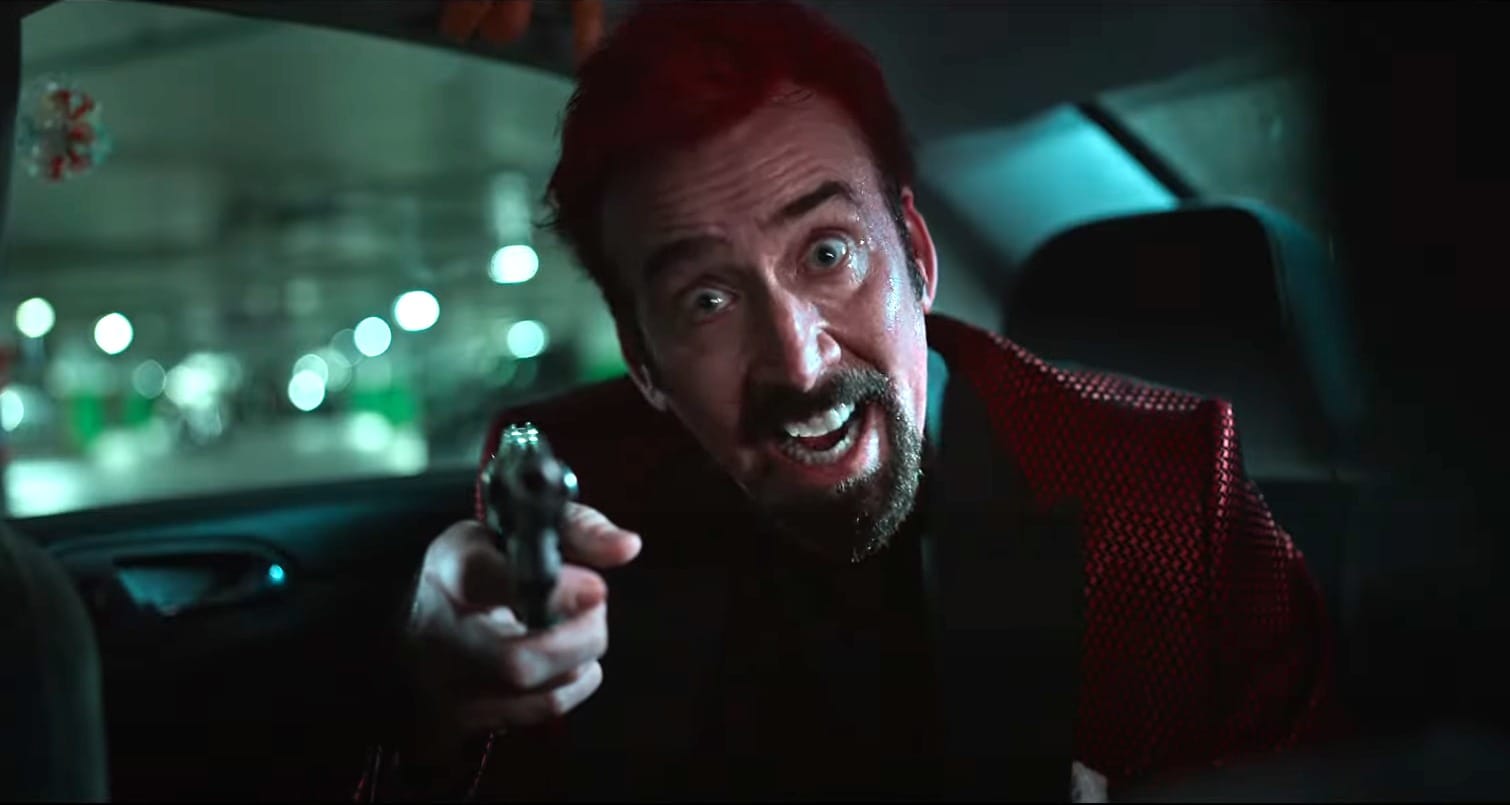Sympathy for the Devil and the Manic of Nicolas Cage

It took me fewer than 10 minutes to recognize Nicolas Cage’s Boston accent as “The Passenger” in Sympathy for the Devil, his newest venture into weird indie cinema. Unlike Pig and Mandy, his newest film is designed with at least a modicum of mainstream appeal. The premise is simple, even if it’s not the thriller version of Locke (2013) that I hoped for following the trailer. The Passenger (Cage) holds The Driver (Joel Kinnaman) hostage and at gunpoint in the latter’s car and commands him to drive. The Driver is shown empathetically, and thus, thanks to the title of the film, we know he is a man with a dark past. Simple enough?
I can’t really call my reveal of this plot turn a spoiler since it’s embedded in the film’s title. And since not much happens, there’s an abundance of time to recall this fact. It’s to no fault of Kinnaman, who plays his part about as empathetically and sheepishly as he can. But when a story is dependent on a moral play telegraphed from the opening title, the game risks ruin immediately.
There’s still something here, I suppose. The film takes place entirely at night and in the streets of Las Vegas, creating pleasant to look at, if easily constructed, images of neon-signage. The little use of light, often from diegetic sources, gets a bit tedious when its only use seems to be highlighting the emotionality of the faces of the two characters. The dialogue scenes in the car, following a rhythm of snappy dickish humor and neutral cinematography, are a hair more interesting than a geriatric staring contest.
But pretty images and story structure are not where the appeal for Sympathy for the Devil rests anyways. That would be with the promised manic of Cage, one of the screen’s very best madmen.
Continue reading at the Boston Hassle.